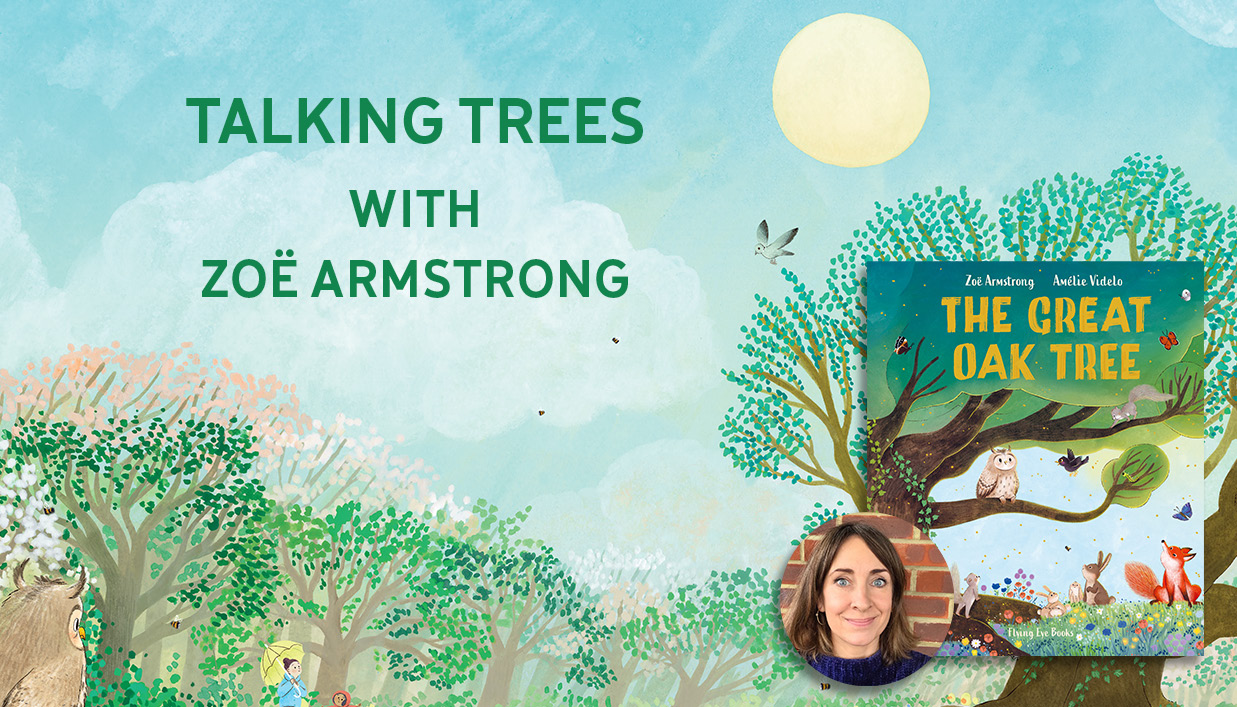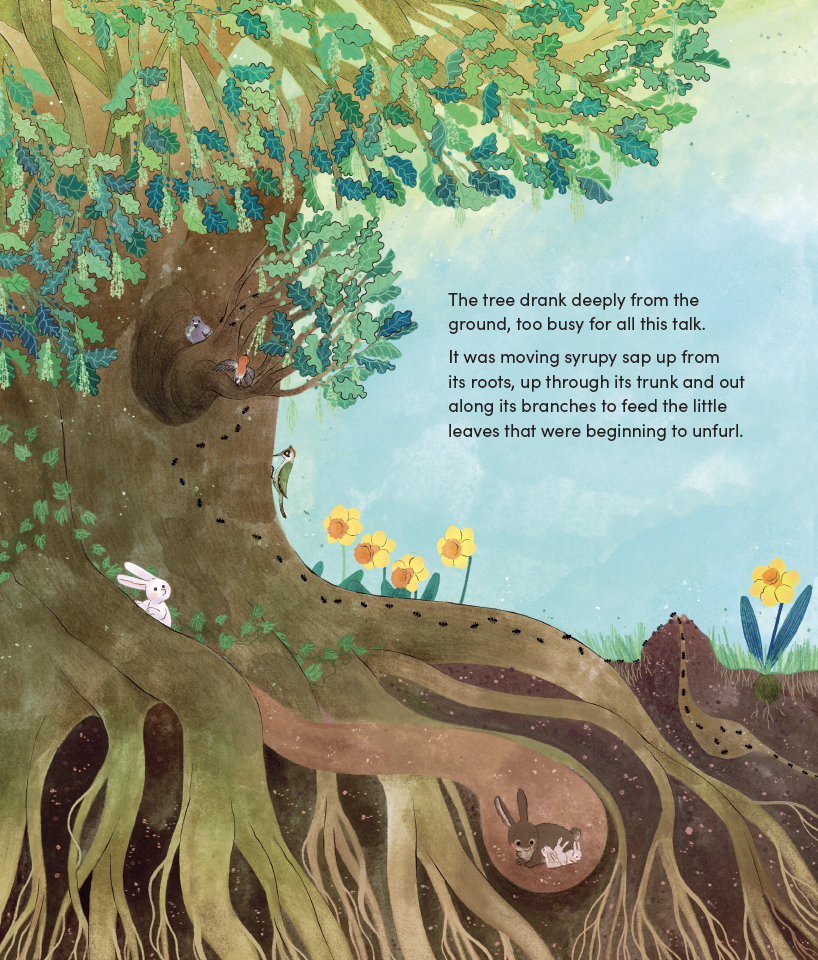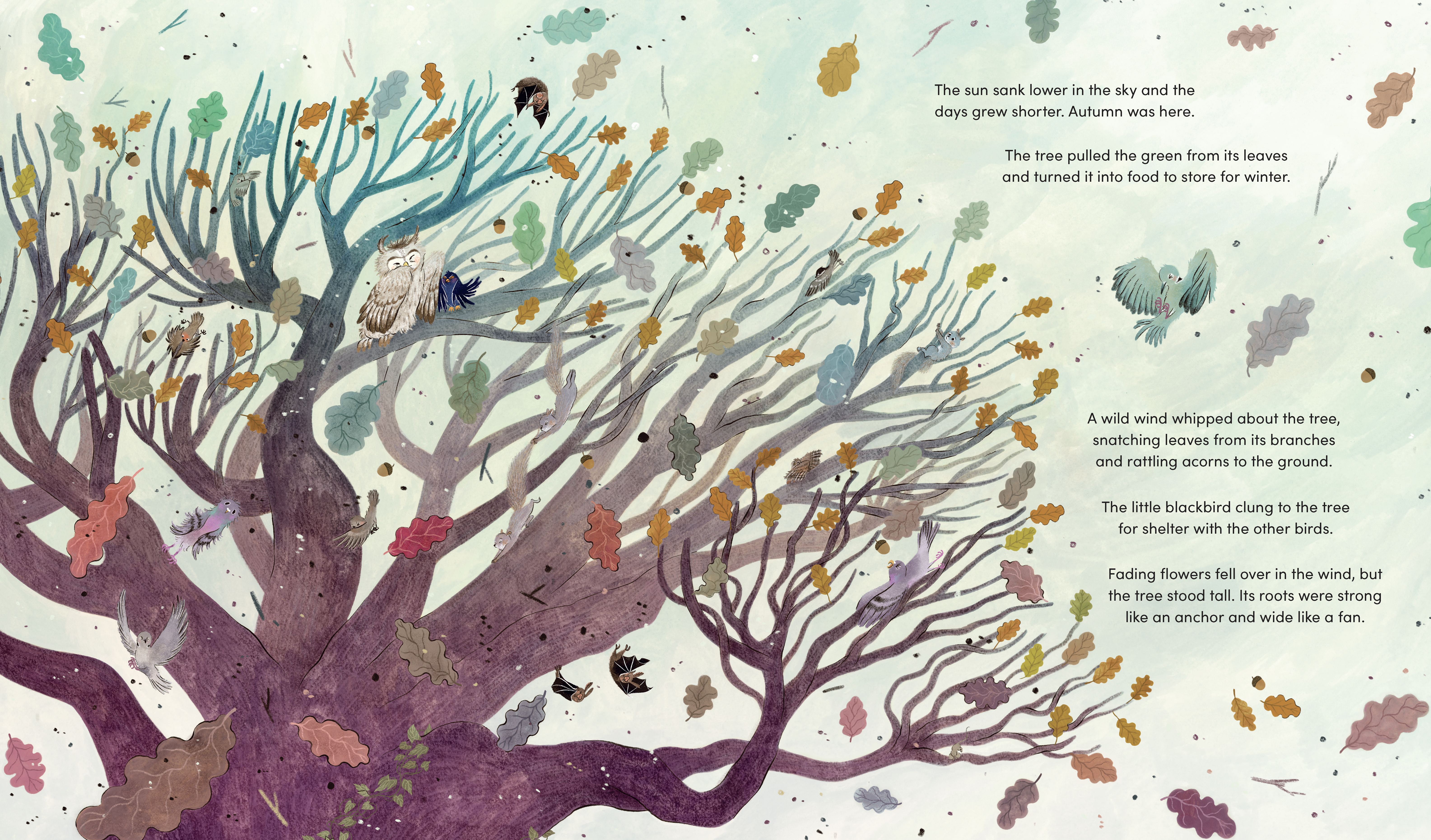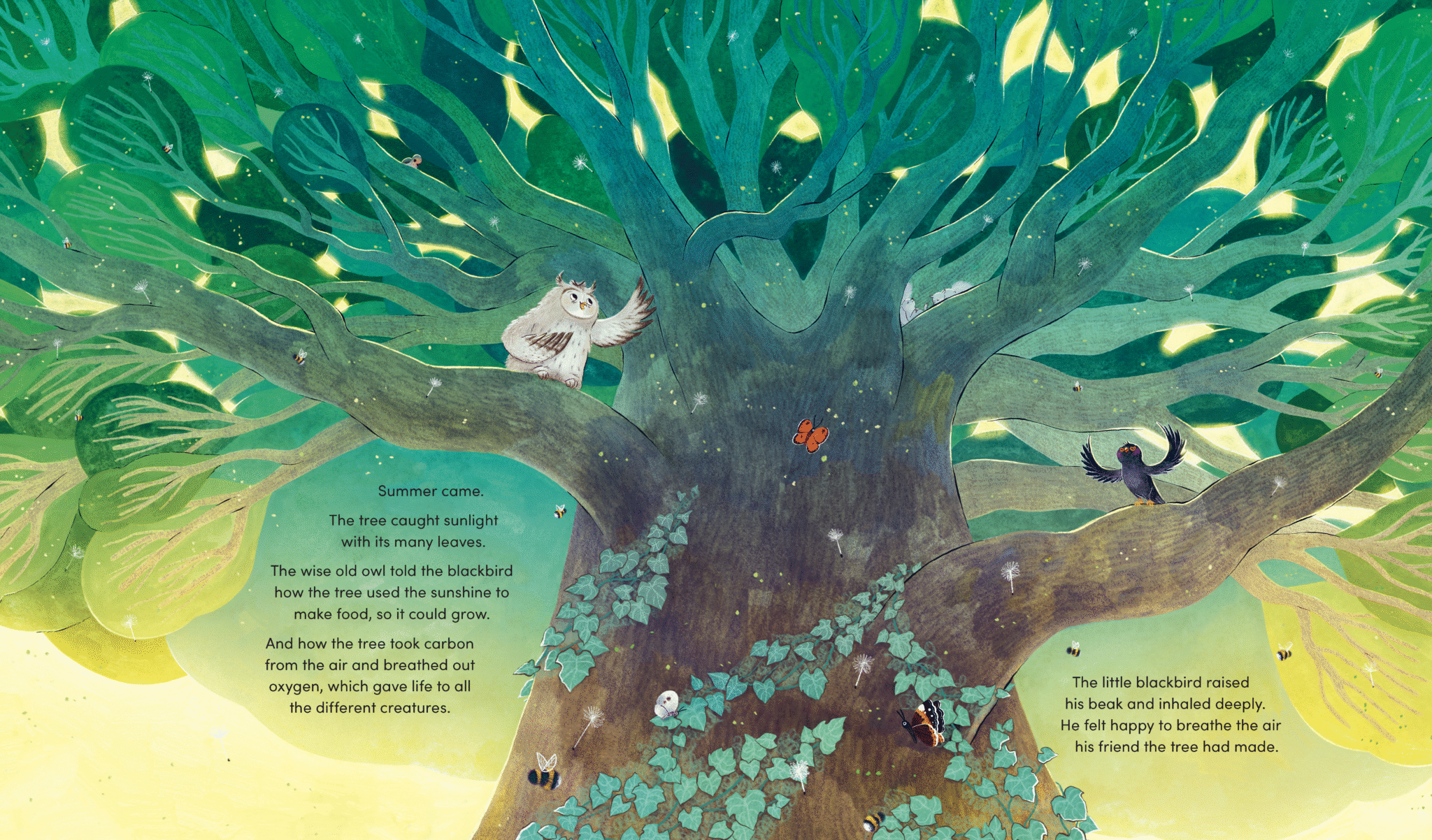To celebrate the publication of The Great Oak Tree, author Zoë Armstrong joins us to talk all things trees, and what they do for us!

“Why do you never move, Tree?”
I wrote The Great Oak Tree near some woods where the city meets the Peak District. We had recently moved up from the South Coast of England, and the light here seemed greener and softer.
There’s a special kind of quiet around an old tree. A feeling of stillness that draws you closer. It is both peaceful and energising at the same time, because – despite their calming qualities – trees are so active.
In the story, a young blackbird wonders why an ancient oak just stands there doing nothing. “Look how busy we all are doing important things. Why do you never move, Tree?”
But trees are at the heart of their ecosystems. They provide shelter, food and a place for wildlife to breed. Birds nest between branches, insects crawl into cracks and crevices in the bark, squirrels and other mammals find cover amongst the leaves.

Much of the work of a tree happens quietly, unseen. Water and minerals are transported up through a tree’s roots and trunk, and along its many branches. Leaves turn sunlight into food. Year by year, the tree is growing, building new layers of wood, quietly recording the seasons in its rings.
I wanted to write a book that would be gentle, grounding and uplifting – like trees themselves – that would inspire children to discover lasting bonds with these steadfast friends of the natural world, just as the Little Blackbird does in our story.
Because even in their stillness, trees show us resilience, quietly supporting the world around us in so many ways.

Their root systems anchor the soil and help water to soak deeper into the ground, instead of rushing off the surface. In this way trees reduce flooding. Their canopies shield the land, softening the impact of rain and wind, keeping the ground stable. Fallen leaves return nutrients to the soil, supporting new plant growth.
In spring, tree blossom attracts bees and other pollinators. By autumn, their branches offer fruit, nuts and seeds which animals (including human animals) will enjoy.
Trees slow climate change by taking carbon from the atmosphere and locking it away in their trunks, branches, leaves and roots. They release oxygen and help filter out dust and other particles from the air that we breathe.

Their leafy canopies act like giant parasols, shading and cooling the ground below. They release water vapour through their leaves, which lowers the air temperature and eases the heat rising from roads and rooftops in our cities.
Trees cool us down and they lift us up. They make the world more beautiful, with their blossom, their green freshness and their golden autumn displays. Trees make us happier and calm our minds. They ground us and help us to focus. They can lower our blood pressure and strengthen our immune systems.
Like the Little Blackbird in our book, when you spend a bit of time around trees, you come to see how quietly busy they are, making the world a wonderful place to be. In uncertain times, we can learn a lot from their gentle and enduring presence.
___________________________________________________________________________
The Great Oak Tree
By Zoë Armstrong and Amélie Videlo
When a little blackbird questions why an old oak tree just stands there doing nothing, a gentle journey of discovery begins.
We see all the ways in which the tree is, in fact, very busy. We learn about how central the tree is central to its ecosystem – the many ways in which it offers shelter and sustenance to the wildlife all around. And when the tree itself is under attack, the blackbird is quick to help defend it.
Get your copy HERE
